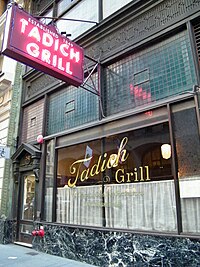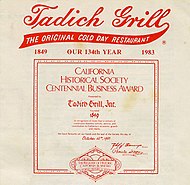
Cantonese or Guangdong cuisine, also known as Yue cuisine, is the cuisine of Guangdong province of China, particularly the provincial capital Guangzhou, and the surrounding regions in the Pearl River Delta including Hong Kong and Macau. Strictly speaking, Cantonese cuisine is the cuisine of Guangzhou or of Cantonese speakers, but it often includes the cooking styles of all the speakers of Yue Chinese languages in Guangdong.

New England cuisine is an American cuisine which originated in the New England region of the United States, and traces its roots to traditional English cuisine and Native American cuisine of the Abenaki, Narragansett, Niantic, Wabanaki, Wampanoag, and other native peoples. It also includes influences from Irish, French, Italian, and Portuguese cuisine, among others. It is characterized by extensive use of potatoes, beans, dairy products and seafood, resulting from its historical reliance on its seaports and fishing industry. Corn, the major crop historically grown by Native American tribes in New England, continues to be grown in all New England states, primarily as sweet corn although flint corn is grown as well. It is traditionally used in hasty puddings, cornbreads and corn chowders.

Grilling is a form of cooking that involves heat applied to the surface of food, commonly from above, below or from the side. Grilling usually involves a significant amount of direct, radiant heat, and tends to be used for cooking meat and vegetables quickly. Food to be grilled is cooked on a grill, using a cast iron/frying pan, or a grill pan.

The cuisine of California reflects the diverse culture of California and is influenced largely by European American, Hispanic American, East Asian and Oceanian influences, and Western European influences, as well as the food trends and traditions of larger American cuisine.
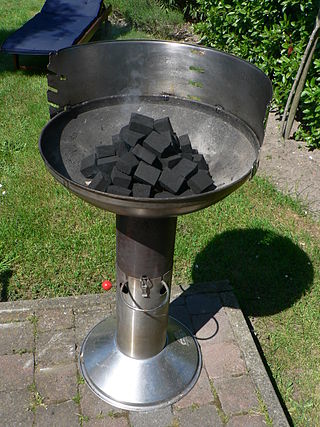
Barbecue varies by the type of meat, sauce, rub, or other flavorings used, the point in barbecuing at which they are added, the role smoke plays, the equipment and fuel used, cooking temperature, and cooking time.

Hangtown fry is a type of omelette made famous during the California Gold Rush in the 1850s. The most common version includes bacon and oysters combined with eggs, and fried together.
When the predecessor of international fast food restaurant chain Burger King (BK) first opened in 1953, its menu predominantly consisted of hamburgers, French fries, soft drinks, milkshakes, and desserts. After being acquired by its Miami, Florida franchisees and renamed in 1954, BK began expanding its menu by adding the Whopper sandwich in 1957, and has since added non-beef items such as chicken, fish, and vegetarian offerings, including salads and meatless sandwiches. Other additions include a breakfast menu and beverages such as Icees, juices, and bottled waters. As the company expanded both inside and outside the United States, it introduced localized versions of its products that conform to regional tastes and cultural or religious beliefs. To generate additional sales, BK occasionally introduces limited-time offers of special versions of its products, or brings out completely new products intended for either long- or short-term sales. Not all of these products and services have been successful; in 1992, Burger King introduced limited table service featuring special dinner platters, but this concept failed to generate interest and was discontinued.

The Western United States has its cuisine, distinct in various ways from that of the rest of the country. States west of Texas, Kansas, Missouri, and Nebraska would be considered part of this area, as would, in some cases, western parts of adjoining states.

Pacific Northwest cuisine is a North American cuisine that is found in the Pacific Northwest, i.e. the states of Oregon, Washington, Idaho and Alaska, as well as the province of British Columbia and the southern portion of the territory of Yukon, reflecting the ethnic makeup of the region, with noticeable influence from Asian and Native American traditions. With significant migration from other regions of the US, influences from Southern cuisine brought by African Americans as well as Mexican-American cuisine as Latinos migrate north from California, can be seen as well.
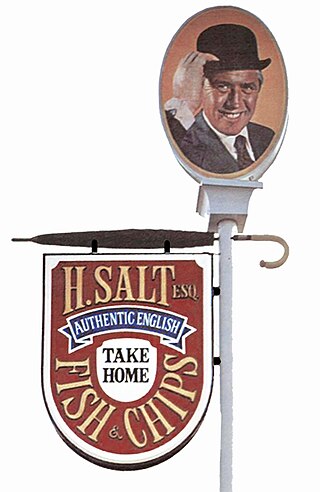
H. Salt Esq. Fish & Chips is a restaurant chain specializing in British-style fish and chips, founded by Haddon Salt in Sausalito, California, in 1965. Salt followed his father and grandfather in becoming a master fish cook and entrepreneur.
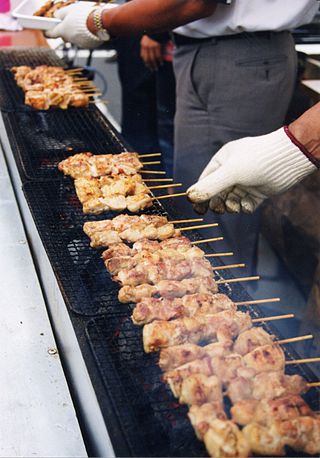
Yakitori is a Japanese type of skewered chicken. Its preparation involves skewering the meat with kushi (串), a type of skewer typically made of steel, bamboo, or similar materials. Afterwards, it is grilled over a charcoal fire. During or after cooking, the meat is typically seasoned with tare sauce or salt. The term is sometimes used informally for kushiyaki in general.

In Japanese cuisine, robatayaki, often shortened to robata, refers to a method of cooking, similar to barbecue, in which items of food are cooked at varying speeds over hot charcoal. Many Japanese restaurants, both in Japan and abroad, specialize in this style of food preparation. Traditionally, the food consists of a combination of morsels of seafood and vegetables, but other kinds of food that are suitable for grilling may also be offered. The robata cooking style is different from other Japanese charcoal cooking in that it uses a wide, flat open fireplace in the style of an irori, rather than a shichirin or other type of charcoal cooking implement.
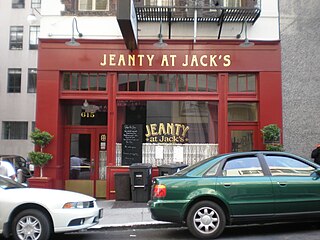
Jack's Restaurant is a historic building and a former restaurant in the Financial District of San Francisco, California. Opened in 1863, Jack’s was the third oldest restaurant in the city, following Tadich Grill and The Old Clam House.
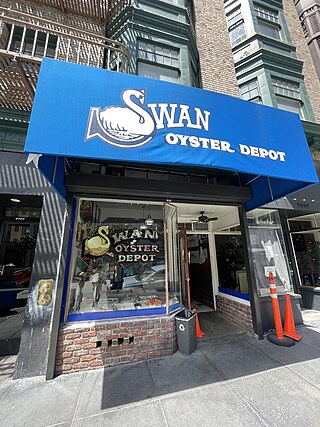
Swan Oyster Depot is a seafood eatery and cultural landmark located in the Polk Gulch neighborhood of San Francisco, California. It opened there in 1903 and except for a brief hiatus and rebuilding period following the 1906 San Francisco earthquake, it has been running continuously in the same venue since that time. This makes it one of the longest continuous businesses and dining establishments in the United States. Swan's menu has remained largely unchanged throughout its history, and it has had exactly the same 18 wooden stools and marble counter that were installed for the post-earthquake reopening in 1912.
California Fish Grill is a chain of restaurants located in the Greater Los Angeles, San Francisco Bay Area, Sacramento metropolitan areas and Las Vegas which specialize in seafood. Their slogan is "Liberating the Love of Seafood". The chain was founded in 1998 in Gardena, California.

Flying Fish Company is a sustainable seafood company which operates a fish market, restaurant, and food cart in Portland, Oregon.

RingSide Fish House was a seafood restaurant in Portland, Oregon. The business operated in southwest Portland's Fox Tower from 2011 to 2018.
